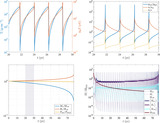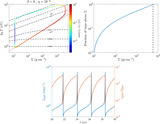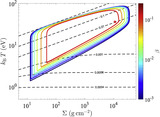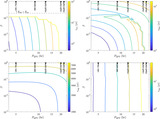Image Details
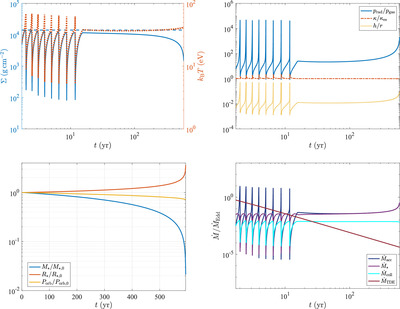
Caption: Figure 5.
Same as Figure 2, but in the presence of substantial collisions/ablation heating, with β = 0.25. Top left panel: surface density (solid blue curve) and midplane temperature (dotted red) initially fluctuate when accretion heating due to the TDE fallback is the dominant energy source, but settle onto a thermally stable evolution throughout most of the system’s lifetime after collisional/ablation heating from the EMRI comes to dominate. The blue-dashed horizontal line is the analytical estimate of the equilibrium ΣTS (Equation (38)), evaluated for the initial stellar and orbital properties. Top right panel: as opposed to the low branch of the β = 0 regime, here p rad ≫ p gas and κ ≈ κ es during the thermally stable phase of the system’s evolution. Bottom left panel: stellar and orbital properties as a function of time. The star is completely ablated after ∼600 yr, in agreement with the analytical estimate of Equation (39). Bottom right panel: instantaneous rates of accretion ﹩{\dot{M}}_{\mathrm{acc}}﹩, stellar ablation ﹩| {\dot{M}}_{\star }| ﹩ , and disk mass impacted by the star ﹩{\dot{M}}_{\mathrm{coll}}﹩, in comparison to the TDE fallback rate ﹩{\dot{M}}_{\mathrm{TDE}}﹩. The transition to a thermally stable evolution occurs roughly when the TDE fallback rate drops below the equilibrium accretion rate (Equation (36)).
Copyright and Terms & Conditions
© 2024. The Author(s). Published by the American Astronomical Society.



